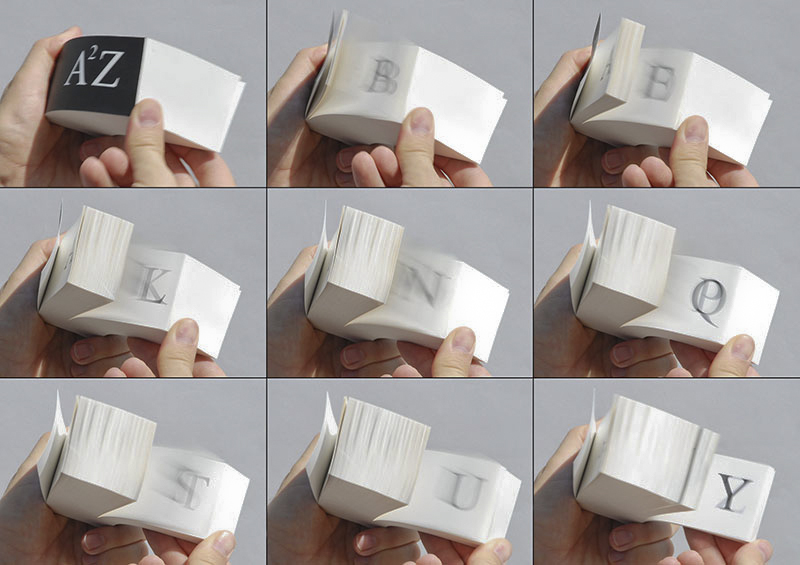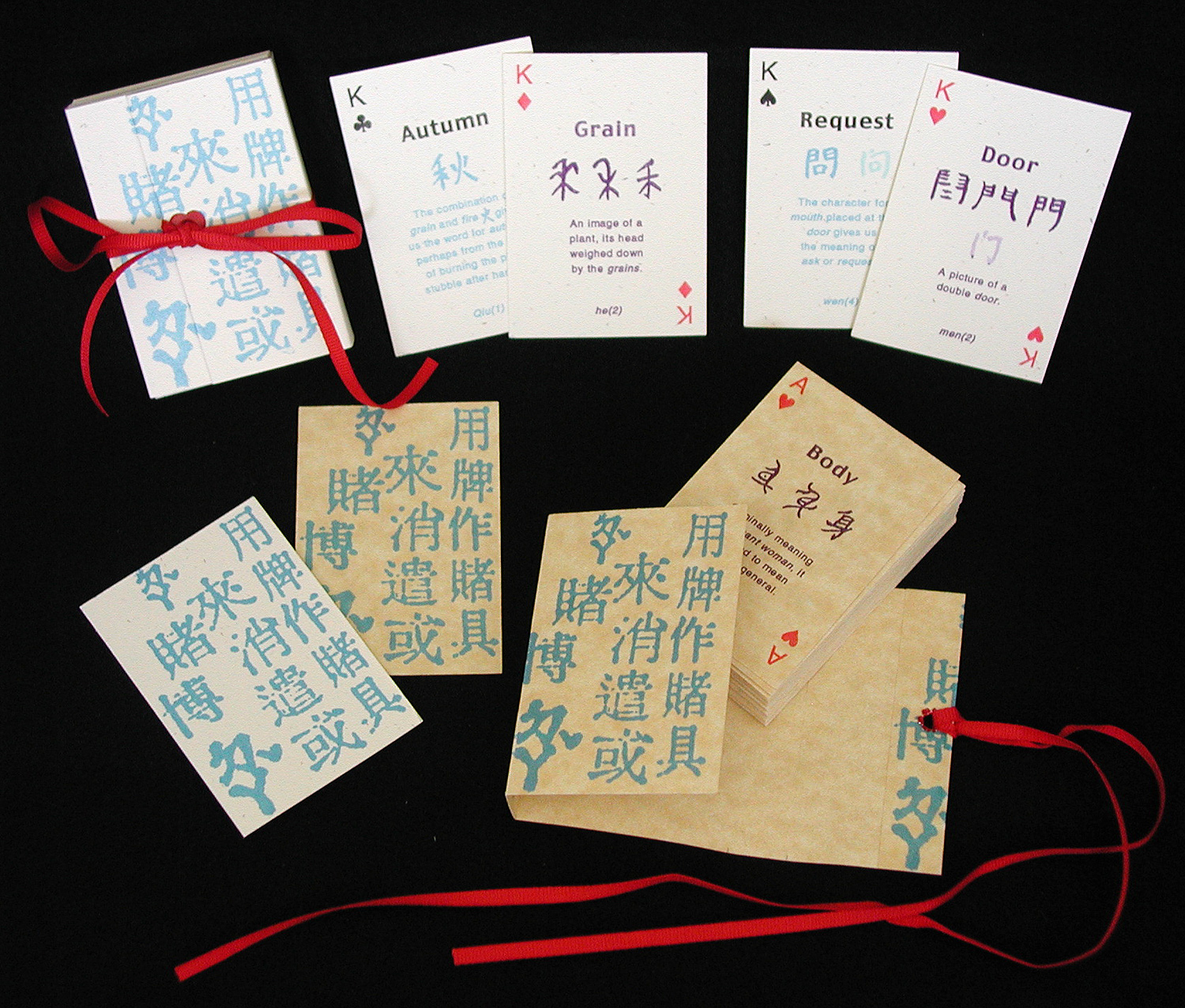It feels tremendous to be on the brink of creating an artists’ book. Hopefully, I will have time to start the design process before we embark on our next trek. My traveling studio leaves Salt Lake City to go Eastbound at the end of May.
For the present, I’m looking forward to stand or sit; and think, plan, and print. How will it feel to handle tools again? Especially the glue!!! I may choose a non-glue method of binding.
Through my research, I discovered many published alphabet/ABC artists’ books in different binding formats depending on the meaning behind the work. Some of the types of bindings used for abecedaries are the flip book, cards, tunnel book, accordion, codex, panorama concertina... to name a few.
Karen Hanmer has used different bindings for her alphabet books. In The Spectrum A to Z the letters of the alphabet are colored to run through the spectrum and back within a tunnel book format.
© 2003 Karen Hanmer, The Spectrum A to Z, pigment inkjet prints, 5 x 5 x 18", edition of 20
Another alphabet book inspired by the U.S. Patriot Act is in an accordion style binding. Patriot Alphabet incorporates words or phrases taken from the vocabulary of terrorism, homeland security, and the Iraq war.
© 2004 Karen Hanmer, Patriot Alphabet, pigment inkjet prints, open 5.75 x 66 x 3.5", closed 5.75 x 4.5x.5"
© 2004 Karen Hanmer, Patriot Alphabet, pigment inkjet prints, open 5.75 x 66 x 3.5", closed 5.75 x 4.5x.5"
Karen’s last alphabet book A2Z is in a flip book style. I had a chance to view A2Z personally at the University of Utah’s library while living in South Jordan.
© 2013 Karen Hanmer, inkjet prints, double-fan adhesive binding, 2 x 4.75 x 2”
Another artist’s work that delighted my eyes was Shu-Ju Wang. Her theme is Belly Dancers in a pull-out accordion structure.
Alphabet for a Belly Dancer captures the essence of belly dance through wordplay and a rhythmic pattern that mimics the dance itself.
© 2003, Shu-Ju Wang, Alphabet for a Belly Dancer, wrap-around cover in Japanese Masa Unwaxed and French handmade paper finished with hand-dyed rayon ribbon, coins, and beads, the protective envelope is made with a shimmering cover stock.
© 2003, Shu-Ju Wang, Alphabet for a Belly Dancer
© 2003, Shu-Ju Wang, Alphabet for a Belly Dancer
In Shu-Ju’s unique nonlatin character set Da(3)Pai(2), we find a full deck of 54 cards trace the evolution of 52 Chinese characters from their original pictographs to their contemporary forms. The heart and diamond suits illustrate the evolution of 26 radicals, and the spade and club suits show these radicals used in complex, combinatorial characters. Based on the book Chinese Calligraphy by Edoardo Fassioli and Guo Yu Ri Bao Zi Dian, a Chinese dictionary.
© 2003 Shu-Ju Wang, Da(3)Pai(2), wrap-around cover, cards in Evergreen Cover Aspen and Astroparche Antique Gold
Many other artists have been inspired by the theme of consonances and vowels of our language and there’s too many to show in this post. Tune in next week for more fun abecedaries.





























